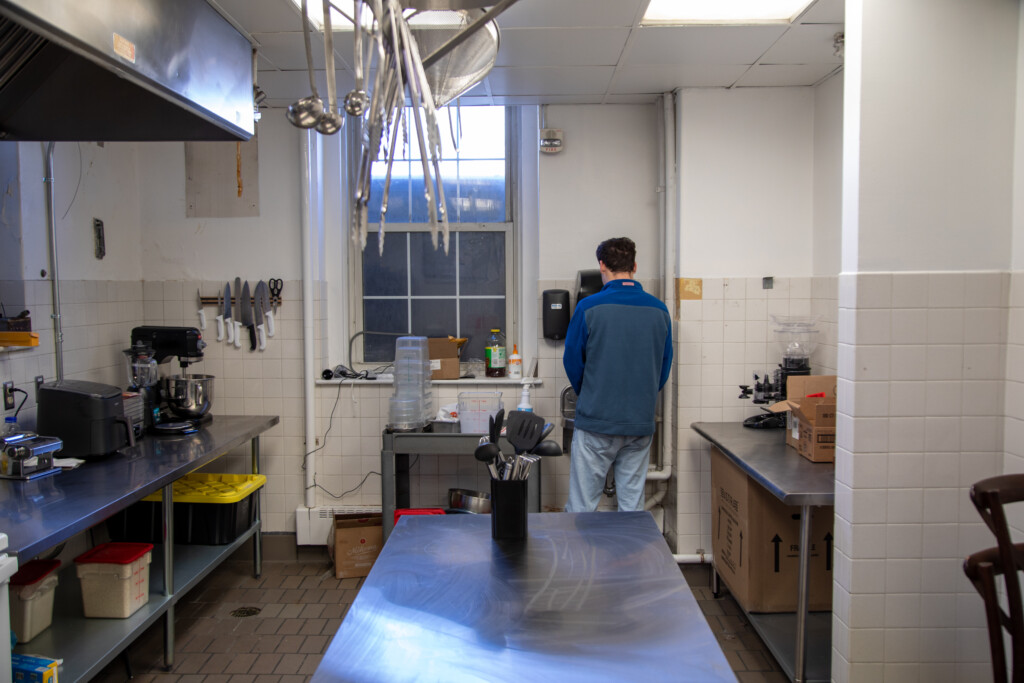Fourth-grade elementary teacher Shane Wiegand teaches everything to his students except for art and gym. But Wiegand’s curriculum plan includes subjects absent from most early education — like the history of gentrification.
Wiegand delivered a condensed version of his gentrification module to a full crowd on Tuesday at the Barbara J. Burger Forum in iZone. He outlined the national and local barriers that prevented African-Americans from living where they wanted in Rochester, and how these contributed to modern segregation and disproportionate poverty for black families.
Wiegand began with testimonies from African-Americans in Rochester in the 1940s and ‘50s on being refused housing.
“In Rochester only two areas have been gracefully made available,” Rev. Charles Boddie said in a 1946 interview. “If any attempt is made to move out of the black ghetto, the attempt is met with opposition.”
The “black ghetto” refers to the third and seventh wards of Rochester, Wiegand explained, where 80 percent of black people in Rochester lived.
Two studies done on African-American households in those areas announced the conditions to be “unsafe, unsanitary,” and “unfit for human living.” But if you were black, Clarence Ingram recalled in an interview in 2008, “you couldn’t rent outside of that area; they just didn’t rent it to you.”
Wiegand explained that African Americans were refused homes because of legal clauses known as restrictive or racial covenants. These covenants would be written by land-owners into the deeds to explicitly forbid the houses from being sold to or occupied by people of color. Wiegand then flicked through instances of these covenants found in estate deeds in Brighton, Irondequoit, Beechwood, and Levittown.
Wiegand also highlighted the role of the Federal Housing Administration (FHA) in furthering this discrimination through their practice of redlining. Redlining took off just after the Great Depression, when president Roosevelt created the National Housing Acts of the 1930s to help families afford housing.
The government began to survey and rate neighborhoods through the Home Owners’ Loan Corporation which they created. Areas rated as “definitely declining,” or “hazardous,” were painted in yellow and red and deemed dangerous, polluted, or largely inhabited by residents of color. The FHA and banks would refuse to grant loans to residents in redlined areas.
Overall, the Federal Housing Administration helped 35 million families obtain mortgages for housing. 98 percent of these families were white. In Monroe County specifically, no person of color received a mortgage for any new suburban development.
Instead, black people were confined to public housing that residents from the time described as “perfectly dreadful.” This largely contributed to the July 1964 riots in Rochester, Wiegand said, as most of the rioters were residents from these locations.
By 1968, nationwide protests about housing resulted in the commission of the Kerner report, which concluded that the United States was “Moving Toward Two Societies, One Black, One White — Separate and Unequal.” This led to the enactment of the Fair Housing Act later that year, which mandated the government to “affirmatively further fair housing.”
But, Wiegand said, the law “didn’t have any teeth” and has only been enforced a handful of times.
Calvin Eaton, the co-founder of grassroots community organization 540WMain, presented with Wiegand and laid out the rationale for giving talks like this.
“It’s really about education,” Eaton said. “People don’t know about this, especially when we think about the education system in the United States being whitewashed.”
Eaton encouraged students to continue to “create opportunities to have these conversations,” as this would be the only way for America to move forward.
“What we see today is not just a stroke of luck,” Eaton said. “It was systemic and it was deliberate. Individuals who are here today did benefit and still do benefit from the privileges that white people have because of our government.”
Editor’s note (3/11/19): The workshop was offered as a free and open class of CAS 202: Introduction to Community-Engaged Scholarship.


